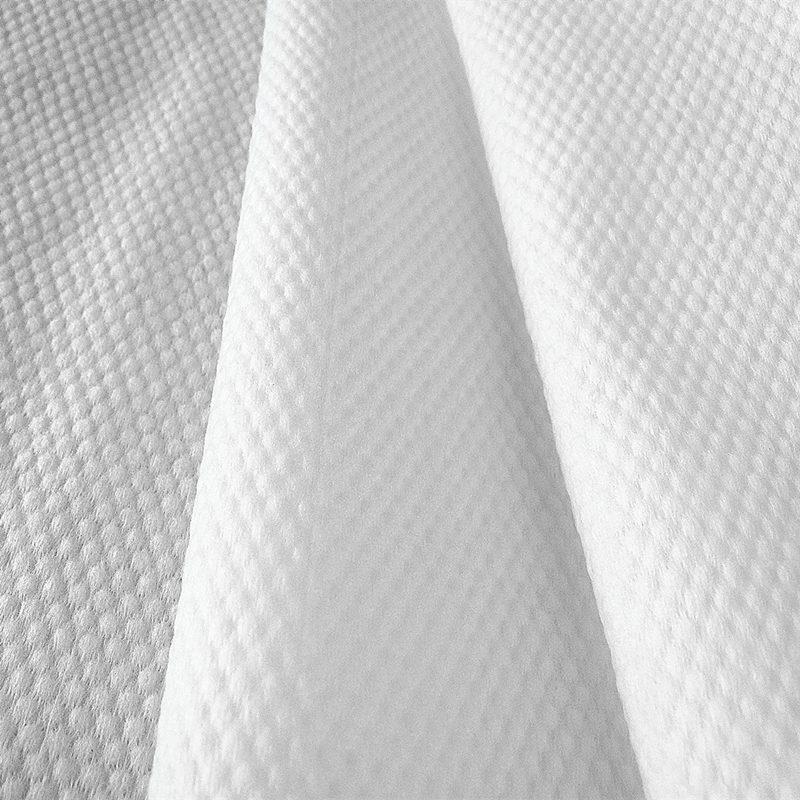In the nonwoven industry, as an environmentally friendly material with excellent performance,
spunlace nonwoven fabrics are widely used in many fields such as medical, clothing and automotive. In the production process of spunlace nonwoven fabrics, embossing technology, as an important processing means, directly affects the appearance of the finished product, feel and its application effect. Therefore, how to ensure the embossing quality of spunlace nonwoven fabrics has become a topic that cannot be ignored in the production. In this paper, we will start from 8 key factors, analyse how to influence the effect of hydroentanglement nonwoven embossing, in order to help enterprises to improve product quality, optimize the production process, and ultimately obtain better market competitiveness.
1. Embossing mould design and manufacturing accuracy
Embossing mould is the core tool to achieve the embossing effect of spunlace nonwoven fabrics. The design accuracy of the mould directly affects the clarity and uniformity of the embossing pattern. The choice of mould material, surface treatment process and processing accuracy will all affect the embossing effect. Higher precision moulds can ensure that the details of the embossing process are handled more finely and the pattern is clearer, thus improving the market acceptance of the product.
2. Fibre density and layout of hydroentangled nonwoven fabrics
The fibre density and layout of hydroentangled nonwoven fabrics are the basic factors affecting the embossing effect. If the fibre is too sparse, the embossing effect may not be obvious enough, and may even cause the phenomenon of loose fibre on the surface of the nonwoven fabric after embossing. If the fibre density is too high, the embossing pattern may be difficult to show. Therefore, reasonable control of fibre density and arrangement structure is the premise to ensure the embossing effect.
3. Embossing temperature and pressure control
Temperature and pressure control in the embossing process is crucial to the embossing effect. Excessive temperature or pressure will cause damage to the hydroentangled nonwoven fabric and even affect the softness and comfort of the product. Ideal embossing temperature and pressure should be precisely adjusted according to the different material, thickness and complexity of the embossing pattern of the hydroentangled nonwoven fabrics, so as to ensure the perfect presentation of the embossing effect.
4. Humidity and coordination of spunlace process
In the production process of spunlace nonwoven fabric, humidity control is an important factor affecting the embossing effect. Appropriate humidity can make the fibre softer and help the embossing pattern to show evenly. Too dry or too wet fibres will affect the embossing effect, so it is necessary to reasonably adjust the humidity in the production process.
5. Embossing machine stability and running speed
The stability and running speed of the embossing machine have a direct impact on the embossing quality. If the machine is not stable, it may lead to uneven embossing pattern, or even the problem of wrinkles or stretching deformation. In addition, running too fast or too slow can affect the clarity and uniformity of the embossed pattern. Therefore, ensuring the precise adjustment and smooth operation of the embossing machine is the key to achieving high-quality embossing.
6. Embossing time control
Too long or too short embossing time may affect the embossing effect of spunlace nonwoven fabrics. Too long embossing time may lead to excessive extrusion of nonwoven fibres, resulting in hardening or damage to the material; while too short a time may lead to incomplete or unclear embossing patterns. Therefore, reasonable control of embossing time to ensure that the pattern depth is moderate and the effect is uniform is the key to improve product quality.
7. The influence of environmental temperature and humidity
Temperature and humidity changes in the production environment will also have a certain impact on the quality of embossing. Under high temperature and high humidity, the nature of the nonwoven material may change, resulting in unstable embossing effect. Therefore, maintaining a stable production environment will help improve embossing quality and avoid quality problems caused by environmental fluctuations.
8. Embossing pattern design and adaptability
Finally, the design of embossing pattern is also an important factor affecting the embossing effect. Complex pattern design may require higher mould precision and process adjustment. Simple patterns, on the other hand, may require less production equipment. Therefore, when designing the embossing pattern, it is necessary to consider the characteristics of spunlace nonwoven fabrics and the adaptability of the production process to ensure that the pattern can be clearly displayed without affecting the function of the material.
Conclusion
The embossing quality of spunlace is the result of a combination of factors, involving all aspects from the design of embossing moulds to the control of the production environment. Through fine control of these factors, manufacturers can not only ensure the stability and consistency of the embossing effect, but also enhance the competitiveness of the product in the market. In an increasingly competitive market, maintaining the stability and sustainability of product quality will be the key to stand out.


